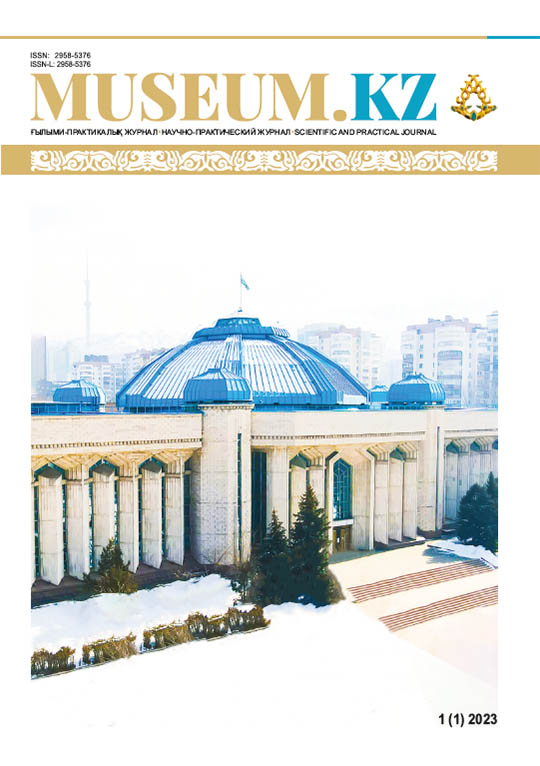TRADITIONS OF THE KAZAKHS ASSOCIATED WITH A PREGNANT WOMAN, CHILDBIRTH AND UPBRINGING (COMPARATIVE ANALYSIS WITH SOME OTHER TURKIC PEOPLES)
DOI:
https://doi.org/10.59103/muzkz.2023.01.10Abstract
The article uses data collected by the author from all over the country. Based on the available data and were divided the Kazakh system of rituals associated with a pregnant woman, her childbirth and upbringing into three main stages: prenatal rites; childbirth customs; postnatal customs. The study revealed that the customs of the Kazakh people are connected with the customs of neighboring peoples, including the Turkic-speaking peoples of Siberia and Central Asia. In addition to the origin of these customs, their semantic meaning was analyzed.The analysis of customs related to a pregnant woman, given in the article, makes it possible to identify the criteria that influenced and influence the position of a woman in the family and society, raising or lowering her status.Materials and methods. In ethnographic studies, information about Kazakh customs related to childbirth is extremely rare, so the article materials are based on the authentic personal experiences of the author. The main principles of the study were differentiated using some methods such: comparative-historical method: customs were studied depending on certain features (the time and place of the custom, the composition and number of participants, the main custom actions, the objects used in the custom, the meaning of the custom), and on the basis of them, common and special features were determined in the historical sequence. Also, the method of regularity: to consider the custom as the main component of the traditional worldview and system of life forms. In the course of the research, approaches of observation and communication, widely used in the world sociological and ethnological sciences, were also used. The analysis of the traditions of the Kazakh people related to the birth of children by comparing them with the customs of the peoples of Siberia and Central Asia contributed to the differentiation of their genetic and cultural commonality. In the differentiation of the topic from a new point of view, the principles of objective and critical analysis and critical study developed at the present stage were the main ones. Problem-chronological, comparative-historical approaches were also used. In particular, the systematization of comparative data served as the basis for determining the relationship of an ethnographic group with an ethnically related group and the consequences of its influence.







